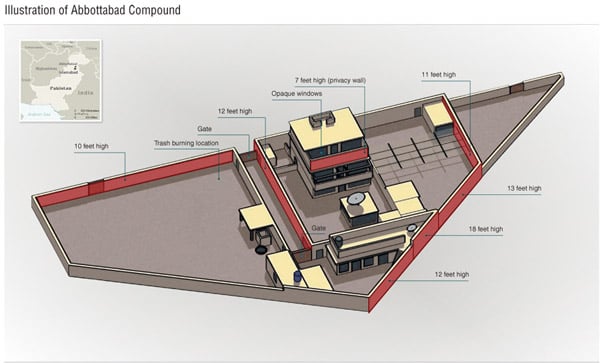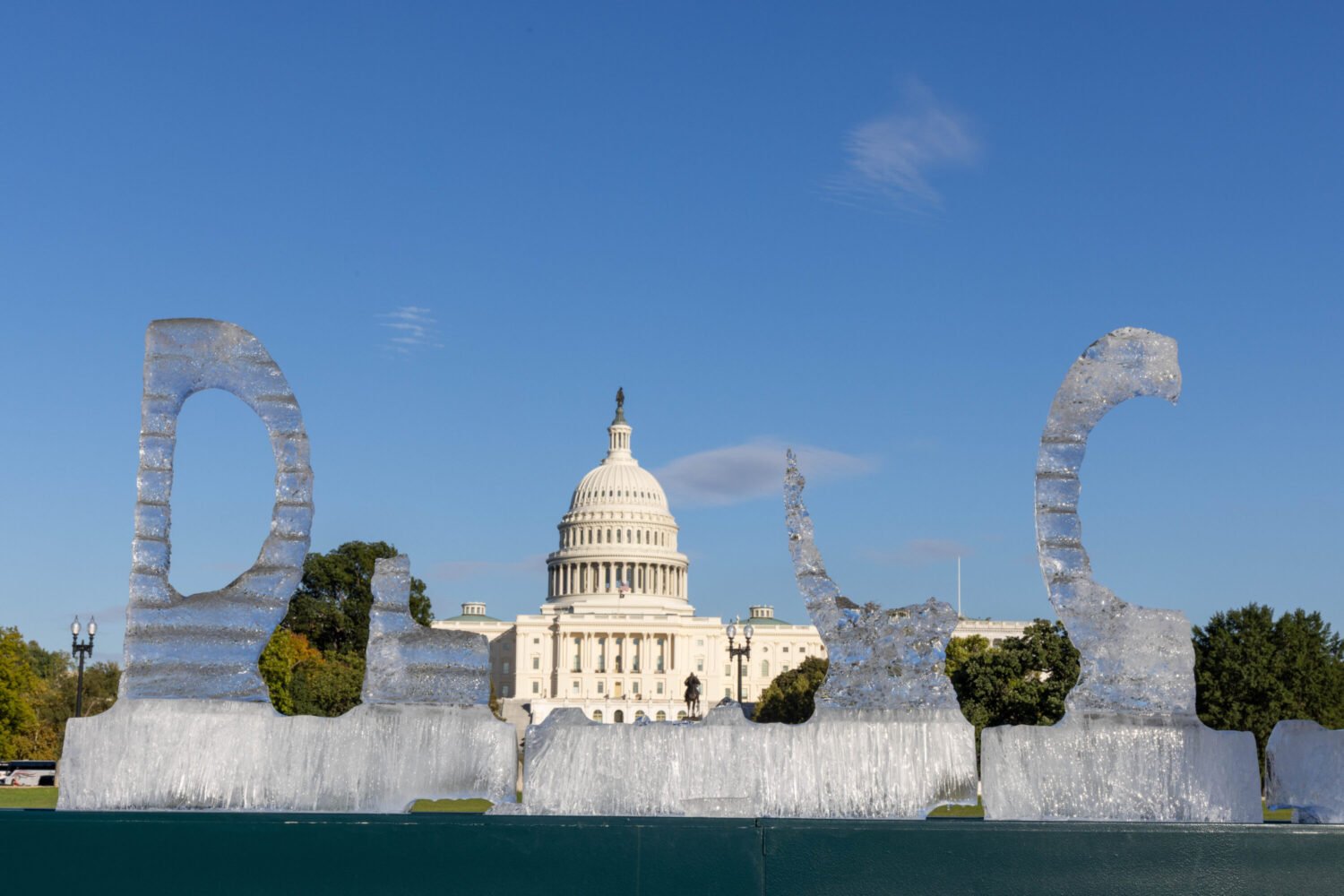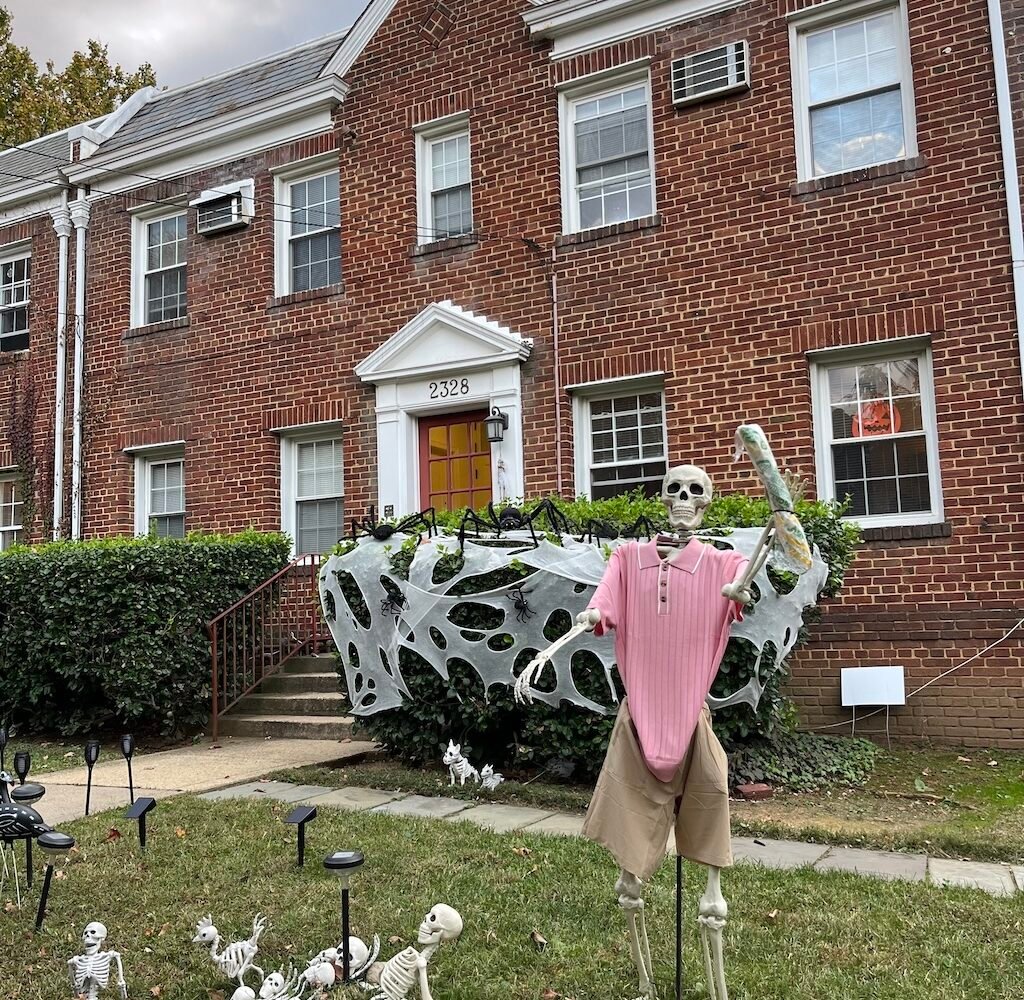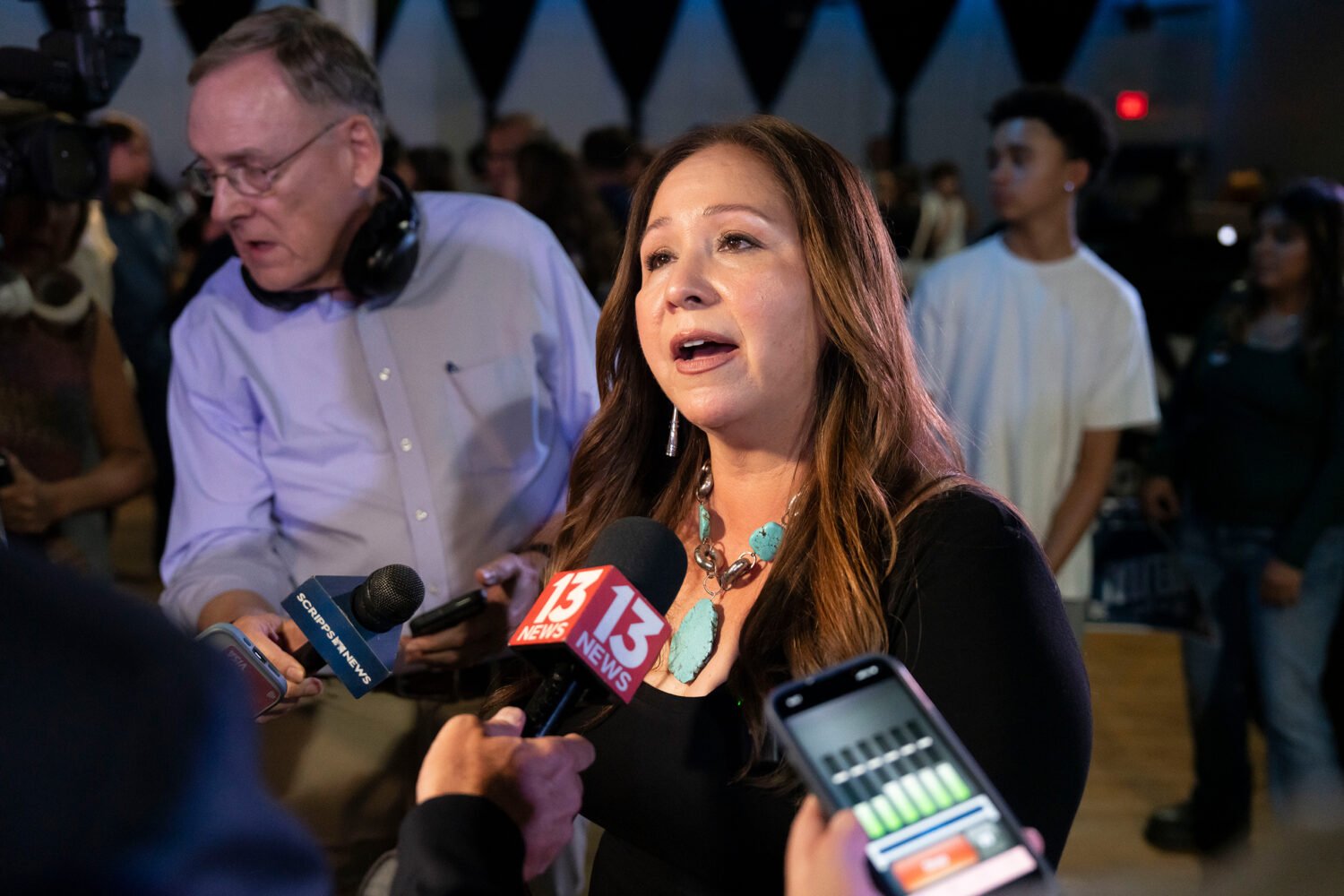Click the image to view the graphic at full size.
Before a team of elite Navy forces stormed Osama bin Laden’s compound in Abbottabad, Pakistan, they and senior US officials had closely studied a digital mock-up of the facility and even a physical miniature, able to be laid out on a table. It showed them the intelligence community’s best guess about what Bin Laden’s hiding place looked like, down to the precise location of gates, fences, windows, and doors.
The digital 3-D model became the next best thing to being there as the Obama administration engaged in a flurry of high-level planning that led to the death of the world’s most wanted man. The model was built over the past several months by analysts at the National Geospatial-Intelligence Agency, a little-covered organization headquartered in Bethesda, Md., that serves as the eyes of America’s intelligence network. It was NGA that first located bin Laden’s hideout about 30 miles north of the Pakistani capital city, Islamabad, according to two senior officials at the agency, both of whom had been working on the hunt for bin Laden since before the 9/11 attacks.
NGA identified Bin Laden’s hideout in August, after leads became available from human sources tracked by the CIA. Among the most promising clues was the name of Bin Laden’s trusted courier, his conduit to the outside world, who unwittingly led officials to the town of Abbottabad. Once the fragments of information pointed to a physical location, “we went looking” for Bin Laden’s house, a senior NGA official said, employing a global network of imagery satellites and sensors, some of which are so precise they’re banned from being sold on the commercial market.
“We found the place that fit what the sources were describing, what most sounded like it,” the official said. The search began broadly. Analysts considered how far from the center of town the compound might be located, and they looked for landmarks and other relevant clues that could provide a plausible location. Partly through a process of elimination, they settled on the compound with 12 to 18-foot walls, topped with barbed wire.
With the suspected target in their sites, the official said that Bin Laden’s house “became the focus of more analysis and collection” by NGA and other agencies. Senior officials were also briefed on what the electronic sentries were discovering.
In the weeks leading up to the raid, CIA Director Leon Panetta pressed the agency to obtain satellite photographs of bin Laden and members of his family, so that he and President Obama’s advisers could be sure they were going after the right facility. Panetta told Time magazine, “NGA was terrific at doing analysis on imagery of that compound,” but “I kept struggling to say, ‘Can’t you at least try to get one of the people that looks like [bin Laden]?’
The agency came up with information almost as valuable: photos of two couriers and their families, which Navy Seals used to identify people inside the compound as they closed in on bin Laden himself.
As the planning for the raid intensified, what had once been a global grope for the tiniest clues about the phantom terrorist’s whereabouts became an intensive, non-stop collaboration by the United States’ most secretive and technologically advanced intelligence agencies. The CIA continued to provide information, and the National Security Agency, the government’s chief electronic eavesdropper, played a central role in the joint effort, which ultimately provided a day-to-day portrayal of life inside the compound, according to senior administration officials.
“This is a living organism,” the NGA official said, describing how the agencies worked together. “We are all adapting and informing” each other, based on new information. NGA built its 3-D model, and analysts continued to refine it as more data was added to the mix.
NGA is accustomed to seeing remotely what human spies can’t with their own eyes on the ground. The agency scouts out suspected nuclear facilities in Iran. It provides the precise coordinates used to guide cruise missiles and smart bombs. But in preparing for the bin Laden operation, the details about terrain and buildings had to be even more specific. An accurate map could mean the difference between successfully killing Bin Laden and a deadly fiasco for the American forces. If NGA provided an inaccurate layout of the compound, the commandos might not find their target, or worse, get lost in an unfamiliar building in the midst of a firefight.
Eventually, NGA analysts produced a digital computer-aided design, or CAD file, the same kind engineers commonly use in drawing up building blueprints. The Navy team used the model to conduct rehearsals and simulations, the official said. They trained on physical mock-ups of the compound, built at locations in the United States. By the time a fleet of helicopters and about two dozen men descended on Bin Laden’s house, they knew precisely where to touch down and how to get inside.
Asked if the agency felt its models were accurate, now that photos from the scene and from inside the house are available publicly, the senior official said, “It was a successful mission.” He then paused and added, “If you hear me grinning…”
A colleague sitting with him chuckled.
“It’s very satisfying,” the official said. “Seeing is believing.”
Subscribe to Washingtonian
Follow Washingtonian on Twitter
More>> Capital Comment Blog | News & Politics | Party Photos

















